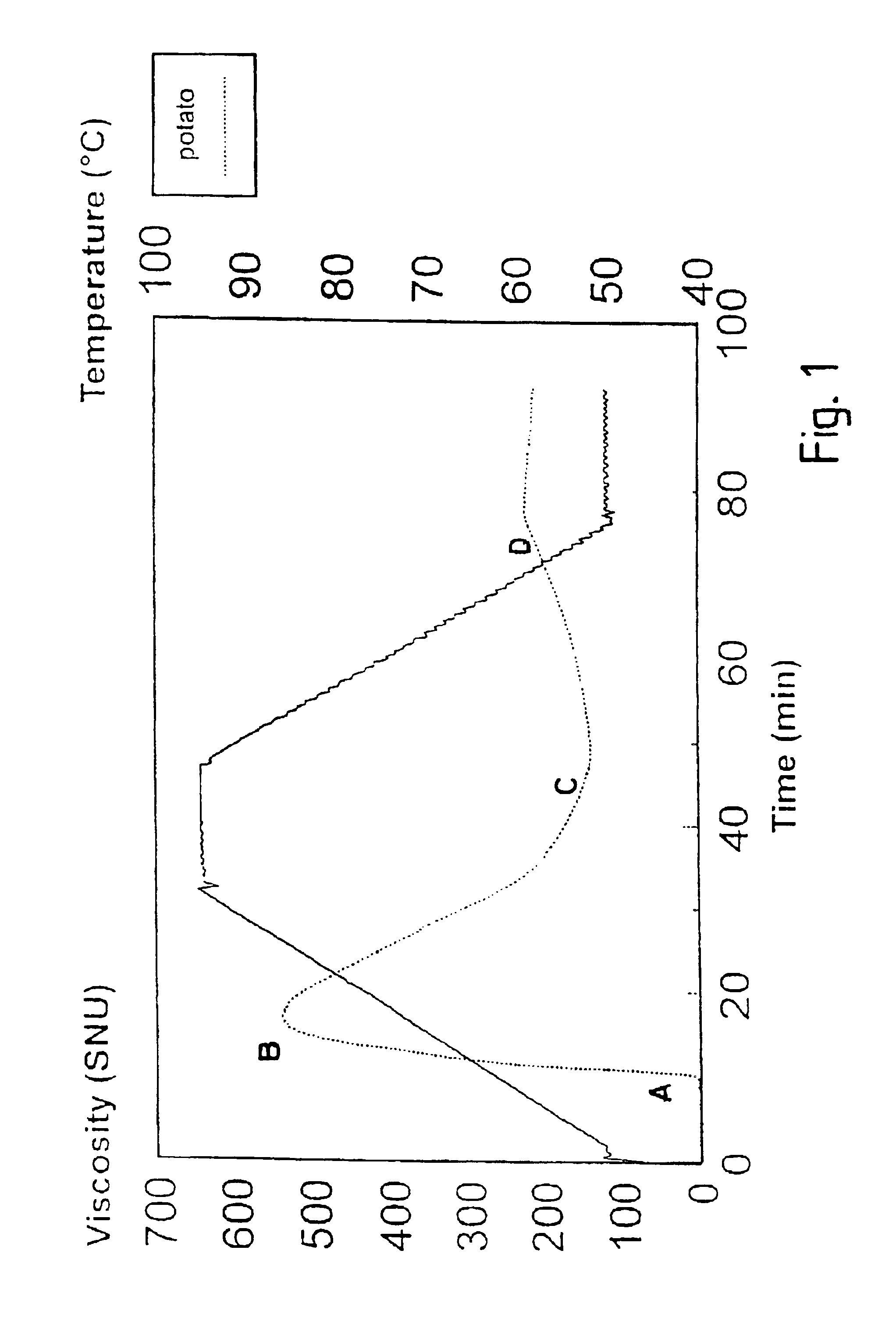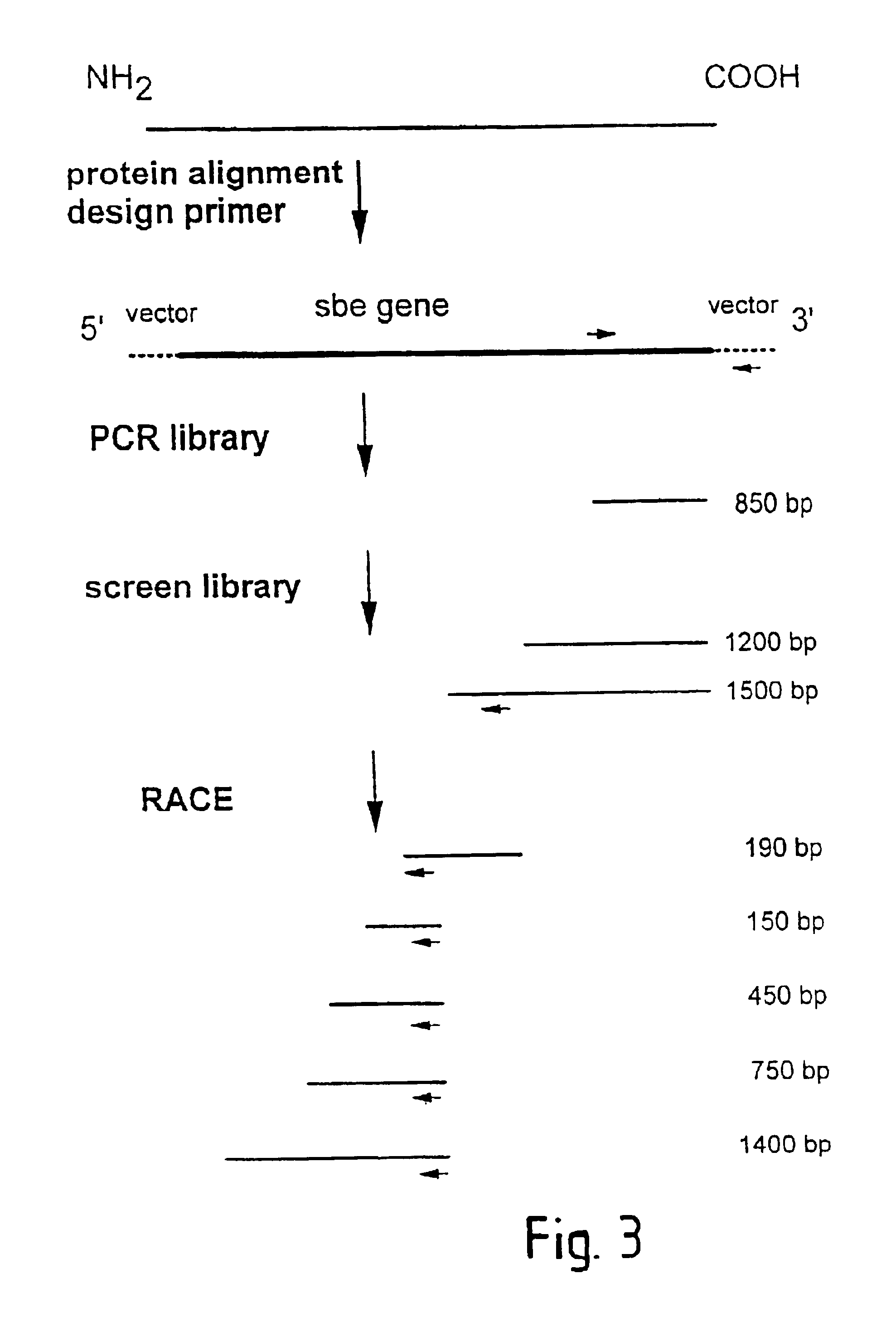Plant Starch Composition
a technology of starch and composition, applied in the field of plant starch composition, can solve the problems of high-expansion structure susceptible to mechanically-induced fragmentation, unsatisfactory properties, and high energy consumption, and achieve the effect of more economical starch gelatinization and viscosity
- Summary
- Abstract
- Description
- Claims
- Application Information
AI Technical Summary
Benefits of technology
Problems solved by technology
Method used
Image
Examples
example 1
Cloning of Potato Class A SBE
[0055]The strategy for cloning the second form of starch branching enzyme from potato is shown in FIG. 3. The small arrowheads represent primers used by the inventors in PCR and RACE protocols. The approximate size of the fragments isolated is indicated by the numerals on the right of the Figure. By way of explanation, a comparison of the amino acid sequences of several cloned plant starch branching enzymes (SBE) from maize (class A), pea (class A), maize (class B), rice (class B) and potato (class B), as well as human glycogen branching enzyme, allowed the inventors to identify a region in the carboxy-terminal one third of the protein which is almost completely conserved (GYLNFMGNEFGHPEWIDFPR, (residues 27-46 of SEQ ID No: 21 in FIG. 4a). A multiple alignment of the DNA sequences (human, pea class A, potato class B, maize class B, maize class A and rice class B, respectively) corresponding to this region is shown in FIG. 4b and was used to design an oli...
example 2
Production of Transgenic Plants
Construction of Plant Transformation Vectors with Antisense Starch Branching Enzyme Genes
[0078]A 1200 bp Sac I-Xho I fragment, encoding approximately the —COOH half of the potato class A SBE (isolated from the rescued λZap clone 3.2.1), was cloned into the Sac I—Sal I sites of the plant transformation vector pSJ29 to create plasmid pSJ64, which is illustrated schematically in FIG. 11. In the figure, the black line represents the DNA sequence. The broken line represents the bacterial plasmid backbone (containing the origin of replication and bacterial selection marker), which is not shown in full. The filled triangles on the line denote the T-DNA borders (RB=right border, LB=left border). Relevant restriction sites are shown above the black line, with the approximate distances (in kilobases) between the sites (marked by an asterisk) given by the numerals below the line. The thinnest arrows indicate polyadenylation signals (pAnos=nopaline synthase, pAg7=...
PUM
| Property | Measurement | Unit |
|---|---|---|
| viscosity onset temperature | aaaaa | aaaaa |
| temperature | aaaaa | aaaaa |
| temperature | aaaaa | aaaaa |
Abstract
Description
Claims
Application Information
 Login to View More
Login to View More - R&D
- Intellectual Property
- Life Sciences
- Materials
- Tech Scout
- Unparalleled Data Quality
- Higher Quality Content
- 60% Fewer Hallucinations
Browse by: Latest US Patents, China's latest patents, Technical Efficacy Thesaurus, Application Domain, Technology Topic, Popular Technical Reports.
© 2025 PatSnap. All rights reserved.Legal|Privacy policy|Modern Slavery Act Transparency Statement|Sitemap|About US| Contact US: help@patsnap.com



